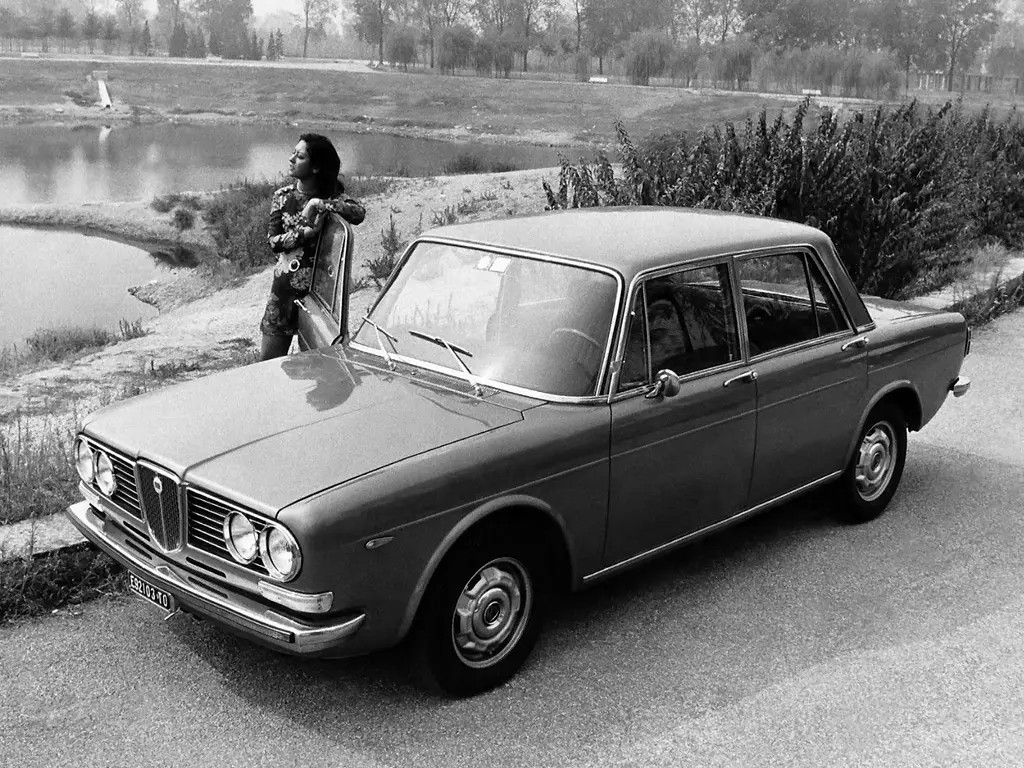THE LANCIA 2000 BERLINA AT 50
23 March 2022
Fifty years ago, Lancia unveiled its last independently designed car. Fiat acquired the famous concern in October 1969 and for many enthusiasts the 2000 Berlina marked the end of an era. It was also one of the most delightful sports saloons of the 1970s.
The original Flavia Berlina made its bow in 1960 as the first-ever Italian front-wheel-drive production car. The power plant was an all-alloy 1.5 litre 4-cylinder ‘Boxer’ unit, and in 1962 the saloon was joined by the Coupe – which will be the subject of a separate blog. By 1963 the Flavia was offered in 1.8-litre form and two years later, Kugelfischer mechanical fuel injection was optional.

In 1967 the Berlina had a facelift and in 1969 it was available in 2-litre form. The introduction of the 2000 (and the demise of the Flavia badge) in 1971 rationalised the line-up. Furthermore, since the demise of the Flaminia the previous year, Lancia had lacked a flagship model, so the 2000 was devised to appeal to the Italian grande bourgeoisie. The grille now sported the Lancia shield while the facia is best described as 1970s’ Art Deco.
As befitting a car of quality, the standard equipment included power steering, decadent velour trim, a hand throttle and even curtains for the rear window. Keen motorists also noted that the 2000 featured a Bosch D-type electronic system and a five-speed gearbox. However, at a UK price of £2,153.13, a Berlina was not an inexpensive prospect. The advertisements may have claimed “There’s only one modest thing about the new Lancia 2000 - the price” but this was still Jaguar XJ6 money.
Yet it should be remembered that a typical prospective buyer would arguably have been a) in the market for the likes of a BMW 2000 Tii or an Alfa Romeo 1750 Berlina and b) the sort of motorist who innately appreciated fine engineering. By contrast, anyone who regarded a Ford Capri 3000E as the epitome of the good life was highly unlikely to be impressed by a 2000 Berlina. Those almost formal lines dated from the previous decade, reflecting the Italian taste for saloons of a restrained appearance. Besides, it featured neither a vinyl roof nor Ro-Style wheels
The 2000 owner was usually able to dispel such delusions about “cars for squares” at any set of traffic lights. The official top speed of the fuel-injected version may have been 115 mph, but it appeared to be capable of at least 200. Here is what Classic Cars magazine thought of the Lancia:
“It is a true driver’s car; one that responds to your every command, with a beautifully flexible engine, a cosseting ride, responsive brakes, precise steering and a 5-speed floor change that urges you to use the 2000 i.e. as any true Lancia should. After one drive you readily forgive that appallingly tacky facia and a handbrake that seems to be purely cosmetic.”
When Classic and Sports Car evaluated that same 2000 i.e., they observed: “This is a member of the Flavia family and that is distinction enough, regardless of those truly deluded passers-by who enquire ‘is it a Lada?”. The report concluded it was “idiosyncratic, uncompromising, charming”.
Production ceased in 1974, although sales continued into the following year. By then, the Beta represented the marque’s future, while the 1976 Gamma was the partial result of a short-lived collaboration with Citroën. As for the 2000, it marked the final chapter in an automotive tradition that commenced in 1906. And to its owners, it is a Lancia, with all that the great name implies.
